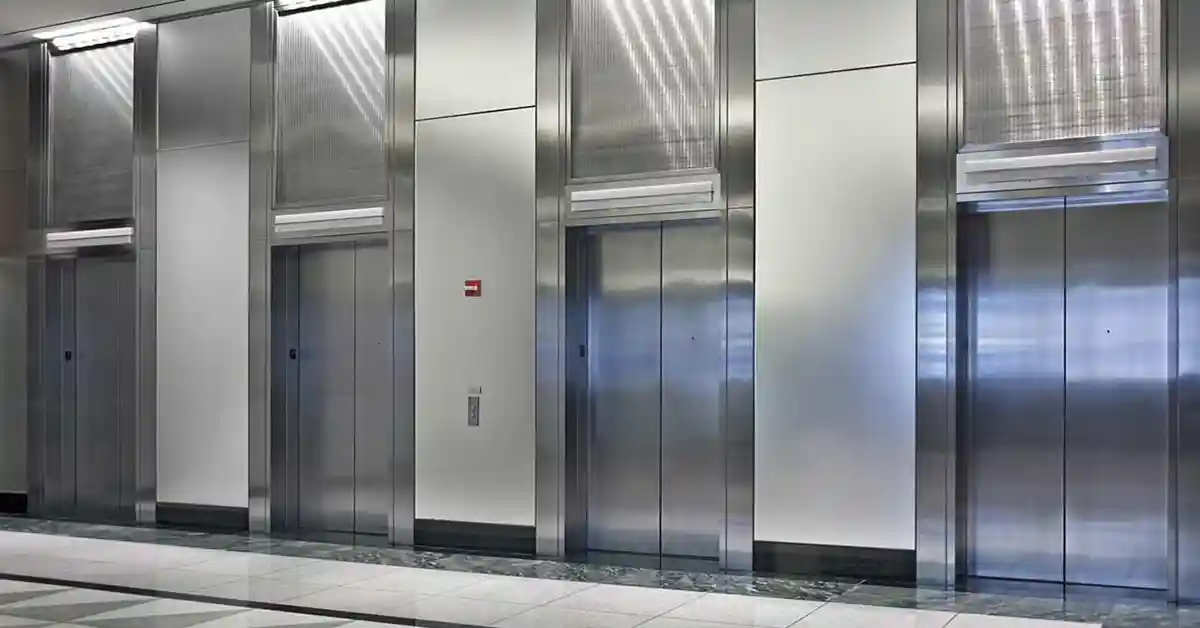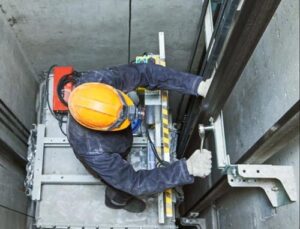
Introduction
The elevator business is a critical component of modern infrastructure, facilitating the smooth and efficient movement of people and goods within buildings. Elevators are essential in high-rise buildings, enhancing accessibility and convenience. This article explores the elevator industry, covering its history, various types, key components, manufacturing processes, installation, maintenance, technological advancements, market trends, challenges, sustainability efforts, customer expectations, future prospects, and frequently asked questions.
History of the Elevator Industry
Early Developments
The concept of vertical transportation can be traced back to ancient civilizations such as Egypt and Rome, where primitive hoists were used to lift water, construction materials, and other goods. These early systems were powered by human, animal, or water wheel.
Milestones in Elevator Technology
The invention of the safety elevator by Elisha Otis in 1853 revolutionized the elevator industry. Otis introduced a safety brake that prevented the elevator car from falling if the hoisting cable broke, making elevators safe for transporting people. This innovation paved the way for the construction of skyscrapers and modern urban development.
Types of Elevators
Passenger Elevators
Passenger elevators are designed to transport people between floors of a building. They come in various sizes and designs, depending on the building's needs. These elevators are commonly found in residential buildings, commercial offices, hotels, and hospitals.
Freight Elevators
Freight elevators are built to carry heavy loads and goods rather than passengers. They are typically used in warehouses, factories, and other industrial settings. These elevators have a larger capacity and are designed to withstand rough usage.
Service Elevators
Service elevators are used by building staff for maintenance, deliveries, and other service-related tasks. They are often located in less visible areas of a building and are crucial for the smooth operation of large facilities.
Dumbwaiters
Dumbwaiters are small elevators used to transport food, laundry, and other small items between floors. They are commonly found in restaurants, hotels, and private homes, making it easier to move items without using the main elevators.
Key Components of an Elevator System
Elevator Car
The elevator car is the compartment that carries passengers or goods. It is designed to provide a safe and comfortable ride, with features such as lighting, ventilation, and control panels.
Hoistway
The hoistway, or shaft, is the vertical passage through which the elevator car travels. It houses the guide rails, cables, and other mechanical components that enable the elevator's movement.
Control System
The control system manages the elevator's operations, including starting, stopping, and moving the car to the desired floor. Modern control systems are highly sophisticated, incorporating microprocessors and software to ensure efficient and safe operation.
Safety Features
Elevators are equipped with various safety features to protect passengers. These include emergency brakes, door interlocks, alarm systems, and backup power supplies. Regular inspections and maintenance ensure that these safety systems function correctly.
Elevator Manufacturing
Leading Manufacturers
Several companies dominate the elevator manufacturing industry, including Otis, Schindler, KONE, and ThyssenKrupp. These companies are known for their innovation, quality, and reliability.
Manufacturing Process
The manufacturing process of an elevator involves several stages, including design, engineering, fabrication, assembly, and testing. Each component is meticulously crafted to ensure high performance and safety.
Quality Control
Quality control is critical in elevator manufacturing. Rigorous testing and inspections are conducted to ensure that every elevator meets strict safety and performance standards. This process includes load tests, speed tests, and safety checks.

Elevator Installation
Site Preparation
Before installing an elevator, the site must be prepared. This involves structural assessments, ensuring the hoistway is ready, and coordinating with other construction activities.
Installation Process
The installation process includes assembling the elevator car, installing guide rails, setting up the control system, and conducting safety tests. Skilled technicians handle this complex process to ensure precision and safety.
Challenges in Installation
Elevator installation can be challenging due to space constraints, structural modifications, and ensuring compliance with safety regulations. Each installation project requires careful planning and execution to address these challenges.
Elevator Maintenance and Safety
Routine Maintenance
Routine maintenance is essential to keep elevators operating smoothly and safely. Use elevator software to manage this process. This includes regular inspections, lubrication of moving parts, and testing of safety systems. Preventive maintenance helps identify and address issues before they become serious problems.
Safety Standards and Regulations
Elevators must comply with local and international safety standards and regulations. These standards ensure that elevators are safe for use and that they are regularly inspected and maintained. Compliance with these regulations is mandatory and essential for public safety.
Common Maintenance Issues
Common maintenance issues include door malfunctions, control system errors, and wear and tear of mechanical components. Regular maintenance helps mitigate these issues and ensures the elevator operates reliably.
Technological Advancements in Elevators
Smart Elevators
Smart elevators incorporate advanced control systems and connectivity features. They can optimize travel times, reduce energy consumption, and provide real-time monitoring and diagnostics. Smart elevators are becoming increasingly popular in modern buildings.
Energy-Efficient Systems
Energy-efficient elevators are designed to minimize energy consumption. They use regenerative drives, LED lighting, and standby modes to reduce energy use. These systems contribute to the overall sustainability of buildings.
Innovations in Design
Innovative designs in elevators focus on user comfort, aesthetic appeal, and space optimization. Modern elevators offer sleek interiors, panoramic views, and touchless controls to enhance the passenger experience.
Market Trends and Opportunities
Growing Urbanization
Urbanization is driving the demand for elevators in residential and commercial buildings. As cities grow and more high-rise buildings are constructed, the need for efficient vertical transportation increases.
Demand in Emerging Markets
Emerging markets present significant opportunities for the elevator industry. Rapid economic growth and urban development in countries like China, India, and Brazil are fueling demand for elevators and escalators.
Trends in Commercial and Residential Buildings
Trends such as smart buildings, luxury residences, and mixed-use developments are influencing the elevator market. Developers are looking for advanced, reliable, and aesthetically pleasing elevator solutions to attract tenants and buyers.
Challenges in the Elevator Business
Regulatory Challenges
Navigating the complex web of local, national, and international regulations can be challenging for elevator manufacturers and installers. Ensuring compliance with these regulations requires significant resources and expertise.
Competition and Market Saturation
The elevator industry is highly competitive, with several established players and new entrants vying for market share. This competition can lead to market saturation in some regions, making it challenging to maintain profitability.
Technological Disruptions
Technological advancements can disrupt traditional business models. Companies must stay ahead of technological trends and continuously innovate to remain competitive. Failure to adapt can result in losing market share to more technologically advanced competitors.
Sustainability in the Elevator Industry
Green Building Standards
Elevators play a role in achieving green building certifications such as LEED (Leadership in Energy and Environmental Design). Energy-efficient elevators contribute to the overall sustainability of a building.
Sustainable Materials and Practices
Using sustainable materials and practices in elevator manufacturing and installation helps reduce the environmental impact. This includes using recycled materials, reducing waste, and improving energy efficiency.
Case Studies of Sustainable Elevator Projects
Notable sustainable elevator projects, such as the One World Trade Center in New York, showcase innovative approaches to sustainability. These projects highlight the use of energy-efficient systems, sustainable materials, and advanced technologies.
Customer Expectations and Service
Importance of Customer Service
Excellent customer service is crucial in the elevator industry. Providing timely support, addressing concerns, and ensuring smooth operation builds trust and satisfaction among customers.
Handling Customer Complaints
Efficiently handling customer complaints is essential for maintaining a positive reputation. Prompt resolution of issues and clear communication help retain customer loyalty.
Enhancing User Experience
Enhancing the user experience through innovations like touchless controls, improved aesthetics, and personalized services can set a company apart from its competitors. A focus on user comfort and convenience is key to success.
Future Prospects of the Elevator Industry
Emerging Technologies
Emerging technologies such as artificial intelligence (AI) and the Internet of Things (IoT) are poised to revolutionize the elevator industry. These technologies enable predictive maintenance, real-time monitoring, and enhanced user experiences.
Future Market Predictions
The demand for elevators is expected to grow, driven by urbanization, technological advancements, and the need for efficient vertical transportation. The market will likely see increased adoption of smart elevators and energy-efficient systems.
Innovations on the Horizon
Future innovations may include advancements in materials, such as lighter and stronger composites, and improvements in energy efficiency. Additionally, the integration of elevators with building management systems will enhance overall building performance.
Conclusion
The elevator business is a dynamic and vital industry, continuously evolving to meet the needs of modern society. Understanding its history, components, technological advancements, market trends, challenges, and future prospects is essential for stakeholders. As we look to the future, the elevator industry will continue to play a crucial role in shaping our urban landscapes and enhancing the way we move.
FAQs
What are the main types of elevators used in buildings? Passenger, freight, service elevators, and dumbwaiters are the main types.
How often should elevators be maintained? Routine maintenance is typically performed every 1-3 months, depending on usage and regulatory requirements.
What are the safety features of modern elevators? Safety features include emergency brakes, alarm systems, interlocks, and backup power systems.
How is the elevator industry addressing environmental concerns? The industry is adopting energy-efficient systems, sustainable materials, and practices to reduce environmental impact.
What are the future trends in elevator technology? Emerging trends include smart elevators, AI integration, energy efficiency, and innovative designs for enhanced user experience.
